Invented by Raghavendra MULINTI, Krishna Sankar Madhavan Pillai, Guruprasad Shimoga Revanna, Surendar Magar, Lifesignals Inc
Physiological signal collection refers to the process of capturing and analyzing various physiological parameters, such as heart rate, blood pressure, respiratory rate, and body temperature. These signals provide valuable insights into an individual’s health and can be used for early detection, diagnosis, and monitoring of various medical conditions.
One of the key drivers of this market is the rising prevalence of chronic diseases, such as cardiovascular disorders, diabetes, and respiratory diseases. These conditions require continuous monitoring of physiological signals to manage symptoms, prevent complications, and improve overall quality of life. As a result, there is a growing need for systems and methods that can collect and analyze these signals accurately and efficiently.
Another factor contributing to the market growth is the increasing adoption of wearable devices and mobile health applications. These devices, such as smartwatches, fitness trackers, and patches, are equipped with sensors that can collect physiological signals in real-time. They offer convenience, portability, and ease of use, allowing individuals to monitor their health anytime, anywhere. Moreover, these devices can transmit the collected data to healthcare professionals, enabling remote patient monitoring and telemedicine services.
Furthermore, advancements in technology have led to the development of innovative systems and methods for physiological signal collection. For instance, there has been a significant improvement in sensor technology, with sensors becoming smaller, more accurate, and capable of collecting multiple signals simultaneously. Additionally, there have been advancements in data analytics and artificial intelligence, enabling more accurate interpretation and analysis of physiological signals.
The market for systems and methods for physiological signal collection is highly competitive, with numerous players offering a wide range of products and solutions. These include medical device manufacturers, technology companies, and healthcare providers. Companies are focusing on developing user-friendly, cost-effective, and reliable solutions to gain a competitive edge in the market.
In terms of geographical distribution, North America currently dominates the market, owing to the presence of well-established healthcare infrastructure, high healthcare expenditure, and increasing adoption of digital health technologies. However, the market is also witnessing significant growth in Asia Pacific, primarily due to the rising healthcare awareness, increasing disposable income, and government initiatives to promote digital health.
In conclusion, the market for systems and methods for physiological signal collection is witnessing robust growth, driven by the increasing demand for wearable devices, remote patient monitoring solutions, and advancements in technology. With the rising prevalence of chronic diseases and the need for continuous monitoring, the market is expected to continue its upward trajectory in the coming years. Companies in this space need to focus on developing innovative and user-friendly solutions to cater to the evolving needs of healthcare professionals and patients.
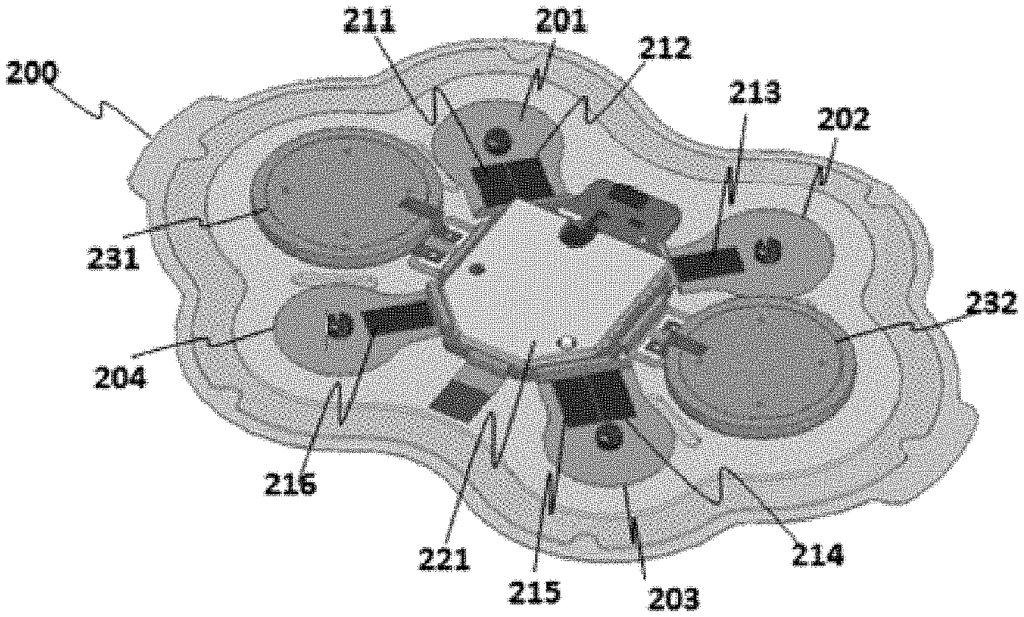
The Lifesignals Inc invention works as follows
A compact integrated patch can be used to collect physiological information. The patch can be wireless. The patch can be used in both clinical and everyday environments. The data acquired by the patch or external devices can be interpreted by computer algorithms and/or healthcare professionals (e.g. third-party applications) and/or used by them. The data acquired by the patch can be interpreted, and presented to healthcare professionals or ordinary users.
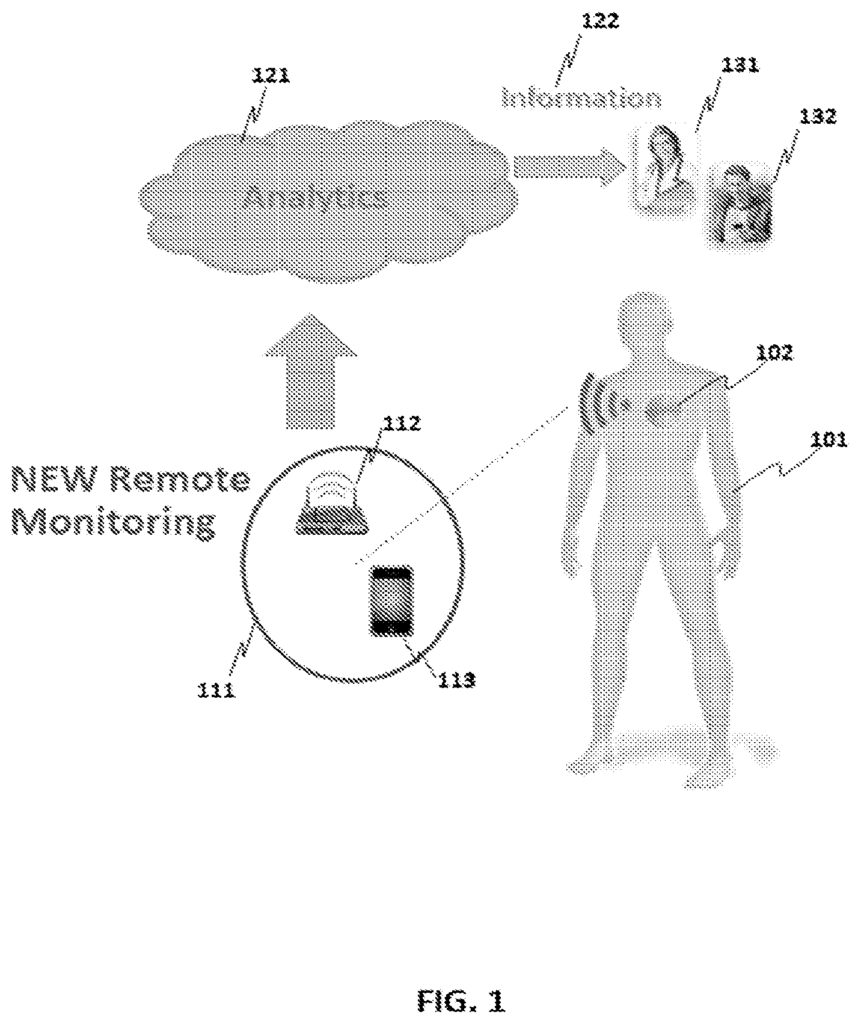
Background for Systems and Methods for Physiological Signal Collection
Monitoring physiological conditions in the body is an important part of health care. With the sophistication of wireless communication and sensors, electronic devices that monitor physiological conditions can be integrated into everyday life. They are used to maintain a healthy lifestyle or manage illness.
In some cases, remote monitoring of health can be a cost-effective way to monitor large populations. A variety of wireless systems have been developed over the years to enable remote monitoring. The conventional health monitoring systems are often bulky and expensive. They may also have poor wireless link reliability or high power dissipation, which limit their application. Monitoring a large number of physiological parameters at high volume for large populations. Health monitoring systems can sometimes fail to account for the concurrent use of other medical equipment, such as defibrillators.
The technologies disclosed herein could overcome shortcomings in existing physiological monitoring systems. These technologies can miniaturize electrodes as well as data collection devices. Electrodes can be integrated onto a printed-circuit board, with resistors specially configured to prevent unwanted energy surges. Portable data collection devices are possible. Electrodes and data collection devices may include wireless interfaces to facilitate the collection of physiological signals using wireless communication technologies. Further, physiological data can be sent to a server via a data collection system for signal analysis. The results of the analytics can be sent to consumers, patients or healthcare providers.
The patch disclosed in one aspect comprises: (a), a base configured for contact with a surface on a user, (b), one or multiple electrodes operably connected to the base, each electrode configured to monitor physiological data from the users; (c), an electronic module communicating with the electrodes, and the electronic modules configured to receive monitored physiological data, and (d), one or several resistors operably attached to the electrodes or electronic module and/or electronic module and configured to protect against an external source electrical current. A defibrillation pulse may be used as the external source of current. The defibrillation pulse can be applied across the chest of the user. The defibrillation pulse can be about or greater than 300 V. One or more resistors can be used to protect one or multiple electrodes, and/or electronic module. One or more resistors can be used to protect an element of the patch against heat generated by external sources of electrical current. In certain instances, the resistance of one or more of the resistors can be around or greater than 100 ohms. The patch can also include one or more battery. The one or two resistors can be placed at a distance of up to or over 1 cm away from the batteries. The number of one or multiple resistors can be matched to the number of electrodes. Each electrode may be operably connected to a resistor. The resistor can be located between the electronic module and each of the electrodes. The electronic module can include one or more processors that are configured to analyze physiological data. The physiological data can be analyzed to determine an ECG, a respiratory signal or heart rate. The electronic module can include a wireless communication device. Wireless communication means can include one or more of: near-range communication means; short-range communication means; and long-range communication means. Wireless communication means can operate using one or more protocols, including Bluetooth, Wi-Fi, and ultra-wideband. The patch can be coupled to one of more sensors that are configured to measure other types of physiological data. The patch can include the sensors. The patch can be connected to the sensors by wired or wireless connections. One or more of the sensors can be a sensor for respiration, a sensor for SpO2, or a combination. Each of the sensors can be operated by a resistor. In some implementations, a patch can include at least four electrodes. These electrodes may include a right-arm (RA), a left-arm (LA), RL, and LL. The corresponding resistor will also be operably connected to the RA or LL electrode. The patch can have four or more electrodes that are configured to gather enough information to generate three limb leads. The patch can be up to 1 inch thick or less. The four electrodes can include at least one electrode for each of the following: right arm (RA), right leg, left leg and left arm. Two or more batteries may be used in the patches. Two or more batteries can be placed between the RA electrode and the RL electrode, as well as between the LA electrode and the LL electrode. One or more electrodes, an electronic module and one or several resistors can be located on one layer. “The single layer can also include one or more batteries.
The method disclosed in another aspect is for protecting a patch against an external source electrical current. It comprises: (a), contacting the surface of a person with a base portion of the patch. A defibrillation pulse may be used as the external source of current. The defibrillation pulse can be applied across the chest of the user. The defibrillation pulse can be about or greater than 300 V. One or more resistors can be used to protect one or multiple electrodes, and/or electronic module. One or more resistors can be used to protect an element of the patch against heat generated by external sources of electrical current. Each of the resistors can have a resistance equal to or greater than 100 Ohms. The patch also includes one or more battery. The resistors can be placed within or beyond 1 cm of each battery. The number of one or multiple resistors can be matched to the number of electrodes. Each electrode may be operably connected to a resistor. The resistor can be placed between the electronic module and each of the electrodes. The electronic module can include one or more processors that are configured to analyze physiological data. The physiological data can be analyzed to determine an ECG, a respiratory signal or heart rate. The electronic module can include a wireless communication device. Wireless communication means can include one or more of: near range communication, short range communication, and long range communication. Wireless communication means can operate using one or more protocols, including Bluetooth, Wi-Fi, medical hand and ultra-wide hand. The patch can be coupled to one of more sensors that are configured to measure other types of physiological data. The patch can include the sensor or sensors. The patch can be connected to the sensors wirelessly or via wired connection. One or more of the sensors can be a sensor for respiration, a sensor for SpO2, or a combination. Each of the sensors can be operated by a resistor. The patch can include at least four electrodes, including at least a left arm (LA), a right leg (RL), et a left leg (LL). A corresponding resistor may also be operably coupled to either the RA or LL electrode. The patch can have four or more electrodes that are configured to collect enough information to generate three or more limb leads. The patch can be up to 1 inch thick or less. The four electrodes can include at least one electrode for each of the following: right arm (RA), a left arm (LA), a right leg (RL), or a left leg (LL). One, two or more batteries may be used in the patches. One, two, or more batteries can be placed between the RA electrode and RL electrode, and/or the LA electrode and LL electrode. One or more electrodes, an electronic module and one or several resistors can be arranged on a single sheet. “The single layer can also include one or more batteries.
The patch disclosed in another aspect comprises: (a), a base configured for contact with a user’s surface; (b), one or multiple electrodes coupled to the base and configured to monitor physiological data; (c), an electronic module connected to the electrodes, configured to receive monitored physiological data. Two or more devices of different types may include at least two from a mobile phone, a data collecting device, and/or a patient monitor. The patch can be configured to communicate via Wi-Fi or MBand and/or UWB with the data collection devices. The patch can be configured to communicate via Wi-Fi with the mobile device. The patch can be configured to communicate via Wi-Fi, UWB, or MBand with the patient monitor. A patch can be configured to communicate via an adapter with the patient monitor. The data collection device can be configured to communicate further with the mobile device or the patient monitor. The mobile device and/or patient monitor may be configured to communicate further with an external server. The user can select the type of device with which the patch will communicate. Healthcare professionals can select the type of device with which the patch communicates. The patch can be configured to communicate using two or more different communication schemes. The patch can be configured to use the same communication scheme with two or more devices. The patch can be configured as an alternative to communicate with two or more devices. The patch can be configured to work with three or different types of devices. Three or more types of devices can be a mobile phone, a data-collection device, and a monitor for patients.
In another aspect of this invention, disclosed is a method of monitoring physiological data. The method comprises: (a), contacting a skin surface of a patient with a patch base. The patch includes: monitoring the physiological data of the user, using one or multiple electrodes that are operably coupled to a base; receiving the monitored physiological data at an electronic device in communication with the electrodes; and (b), wirelessly transmitting received physiological data to one or two different types of devices. Two or more devices of different types may include at least two from a mobile phone, a data collecting device, and/or a patient monitor. The patch can be configured to communicate via Wi-Fi or MBand and/or UWB with the data collection devices. The patch can be configured to communicate via Wi-Fi with the mobile device. The patch can be configured to communicate via Wi-Fi, UWB, or MBand with the patient monitor. A patch can be configured to communicate via an adapter with a patient monitor. The data collection device can be configured to communicate further with the patient monitor and/or mobile device. The mobile device and/or patient monitor may be configured to communicate further with an external server. The user can select the type of device with which the patch will communicate. Healthcare professionals can select the type of device with which the patch communicates. The patch can be configured to communicate using two or more different communication schemes. The patch can be configured to use the same communication scheme with two or more devices. The patch can be configured as an alternative to communicate with two or more devices. The patch can be configured to work with three or different types of devices. Three or more types of devices can be a mobile phone, a data-collection device, and a monitor for patients.
The present invention discloses a system to monitor physiological data. This system comprises: (a), a patch configured for monitoring the physiological data of a user, (b), a data-collection device wirelessly communicating with the patch and configured to receive monitored physiological data via the patch. The data collection device can have a maximum size of 8 cm or less. The volume of the data collection device can be equal to or less than 30 cm3. The data collection device can be in the form of a credit card. The data collection device can be in the form of a bracelet. The data collection device can include a memory. The data collection device can store physiological data from the user over a period of at least two or more days. The data collection device can be configured to Holter monitoring or event monitoring and/or loop monitor. The data collection device can be configured to transmit and/or store the physiological data received to another device in real-time. After data collection, the data collection device can be configured to send the physiological data received to another device or server. The data collection device can be configured to send the physiological data received to another device or server as a batch file. The data collection device can be configured not to analyze the physiological data received. The data collection device can be configured to track the location of the user. The data collection device can include a GPS. The data collection device can include a user interface. The user interface can include one or more buttons. The one or more buttons can be used to signal the start of an event in order to monitor it. The one or more buttons can be programmed to record and save a message sent by the user into the data collection device using a microphone. The user interface can be a touch screen display. The data collection device can include a microphone. The data collection device can be configured to communicate a mobile device. Mobile devices can be smartphones, pda’s, or tablets. The data collection device can be configured to communicate directly with the patient monitor. A data collection device can be configured to work with a patient monitor using an adapter. The data collection device can be configured to communicate with up to two different types of devices. Two or more devices of different types may include a patient monitor, and a mobile phone. The system can also include a server that is configured to receive physiological data and perform analytics. The patch and the data collection device can communicate via Wi-Fi or MBand. The patch can be configured to communicate further with a third-party device. The patch can be configured to communicate via the data collection device with the third device. The data collection device can extend the communication distance between the patch and the third device. The data collection unit may increase the distance of communication between the patch, the third device and at least two times compared to the absence of the device.
In another aspect of the invention, disclosed herein, is a method to monitor physiological data. The method comprises: (a), monitoring the physiological data by a user, and (h) receiving monitored physiological data via the patch. The data collection device can have a maximum size of 8 cm or less. The volume of the data collection device can be equal to or less than 30 cm3. The data collection device can be in the form of a credit card. The data collection device can be in the form of a bracelet. The data collection device can include a memory. The data collection device can store physiological data from the user over a period of at least two or more days. The data collection device can be configured to Holter monitoring or event monitoring and/or loop monitor. The data collection device can be configured to transmit and/or store the physiological data received to another device in real-time. After data collection, the data collection device can be configured to send the physiological data received to another device or server. The data collection device can be configured to send the physiological data received to another device or server as a batch file. The data collection device can be configured not to analyze the physiological data received. The data collection device can be configured to track the location of a user. The data collection device can include a GPS. The data collection device can include a user interface. The user interface can include one or more buttons. The one or more buttons can be used to signal the start of an event in order to monitor it. The one or more buttons can be programmed to record a message sent by the user and store it in the data collection system using a microphone. The user interface can be a touch screen display. The data collection device can include a microphone. The data collection device can be configured to communicate using a mobile device. Mobile devices can be smartphones, pda’s, or tablets. The data collection device can be configured to communicate directly with the patient monitor. A data collection device can be configured to work with a patient monitor using an adapter. The data collection device can be configured to communicate with up to two different types of devices. Two or more devices of different types may include a patient monitor, and a mobile phone. The system can also include a server that is configured to receive physiological data and perform analytics. The patch and the data collection device can communicate via Wi-Fi or MBand. The patch can be configured to communicate further with a third-party device. The patch can be configured to communicate via the data collection device with the third device. The data collection device can extend the communication distance between the patch and the third device. The data collection unit may increase the distance of communication between the patch, the third device and at least two times compared to the absence of the device.
It is understood that the different aspects of this disclosure can be appreciated either individually, collectively or in combination. The disclosure described in this document can be used for any of the applications listed below. Reviewing the claims and figures will reveal other features and objects of the disclosure.
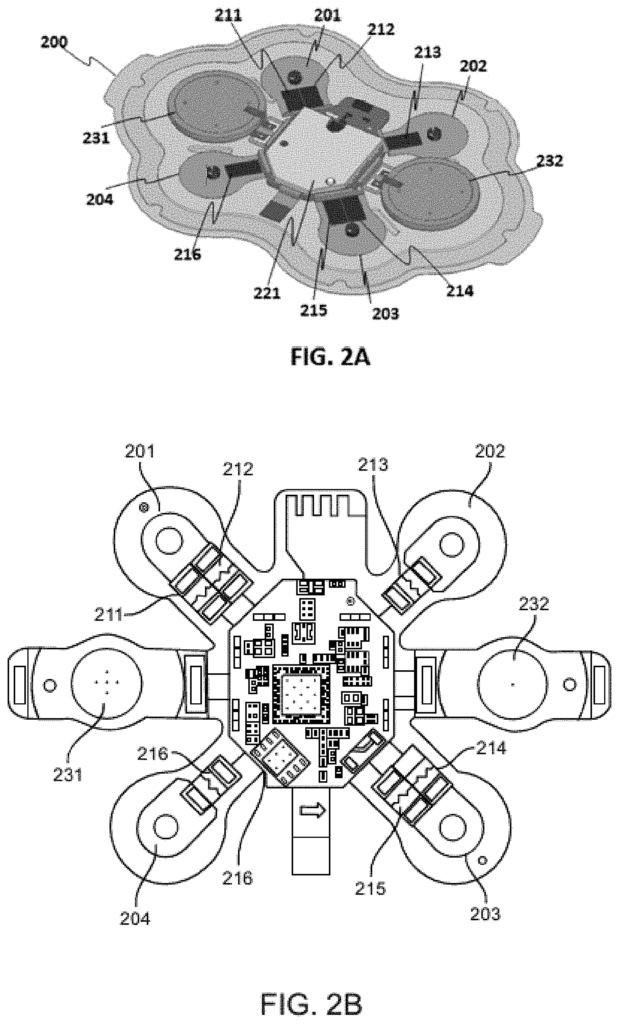
INCORPORATION BY RESEARCH
All publications, patents and patent applications mentioned herein are hereby incorporated in the same degree as if every publication, patent or patent application were specifically and individually stated to be incorporated in their entirety by reference.
It will be clear to those who are skilled in the art, that these embodiments have been shown and described only as examples. The skilled person in the art can make many variations, changes and substitutions without departing from the devices, methods and systems disclosed here. “It should be understood that different alternatives to the embodiments of this invention may be used.
The meaning of all technical terms is the same as that which would be understood by a person with ordinary knowledge in the field to which the disclosure belongs, unless otherwise stated. In this specification and in the claims that follow, the singular forms are?a? ?an,? The terms?an?,? Plural references are acceptable unless it is clear that the context requires otherwise. If you see a reference to “or”, it means that the word is being used. Any reference to?or? “Unless otherwise stated.
The present disclosure provides technologies which may enable electrodes and data-collection devices to be miniaturized and/or made more convenient. The electrodes and the data collection devices can be linked using wireless communications. Signal analytics can be performed on the physiological signals that are collected by data collection devices. The results of the analysis can be sent to various parties such as a health care provider, patient or family member. The systems and methods described herein can help simplify the health monitoring process or create a portable, agile health monitoring system. The systems and methods described herein can enable widespread or universal health monitoring using portable devices in some cases.
Technologies Overview
The technologies disclosed herein can support a variety of health monitoring procedures. The health monitoring procedures can include but are not restricted to: Holter monitoring, where the electrical activity of the cardiovascular system is monitored for more than 24 hour by an ambulatory staff. By pressing a single button, a few minutes’ worth of data can be sent when an event occurs.
FIG. Figure 1 shows an example of a health monitoring system. A patch 102 that is capable of wireless communication and sensing can be attached to a user 100 in order to monitor them. A user can be a patient who has a condition (e.g. cardiac abnormality) or someone who wants to know their health status. One or more wireless devices can receive the physiological signals from a user. Wireless devices 111 can transmit physiological signals to a server for analysis. In different embodiments, the signal can be sent directly from an electrode patch to a computer 121 or via wireless devices 111. The extracted information may be sent to a healthcare provider 131, a patient 132, or a member of the family.
In various embodiments, a patch 102 may be placed on a forehead or on a chest to measure physiological signals (e.g., electrocardiogram (ECG) and photoplethysmographic signals. A patch 102 can collect signals over a period of at least a cardiac cycle or for at most 5 minutes or one hour or three consecutive days. Wireless devices 111 can include a WiFi access point 112 and a mobile device, which could relay signals to an analytics server.
Patch
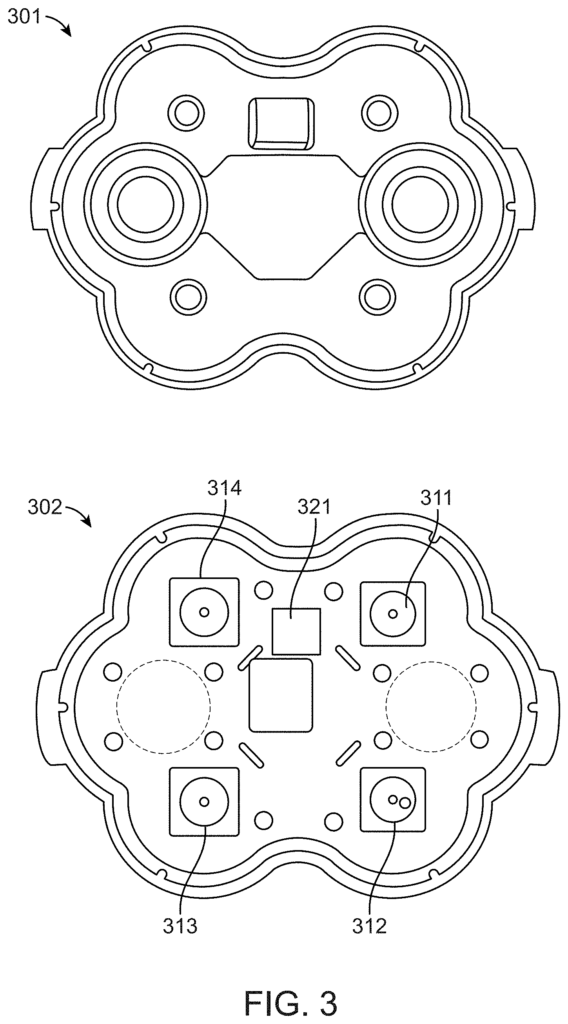
A system disclosed in this document may include a patch or the use of same. FIG. FIG. A patch is shown in 2B as an example. A patch can be used to monitor physiological data. Examples of physiological data include, but not limited to, heart rate, body temperature, conductivity, impedance, resistance, synaptic signals, neural signals, voice signals, vision or optical signals, electrocardiography, electroatriography, electroventriculography, intracardiac electrogram, electroencephalography, electrocorticography, electromyography, electrooculography, electroretinography, electronystagmography, electroolfactography, electroantennography, electrocochleography, electrogastrography, electrogastroenterography, electroglottography, electropalatography, electroarteriography, electroblepharography, electrodennography, electrohysterography, electroneuronography, electropneumography, electrospinography, and electrovomerography.
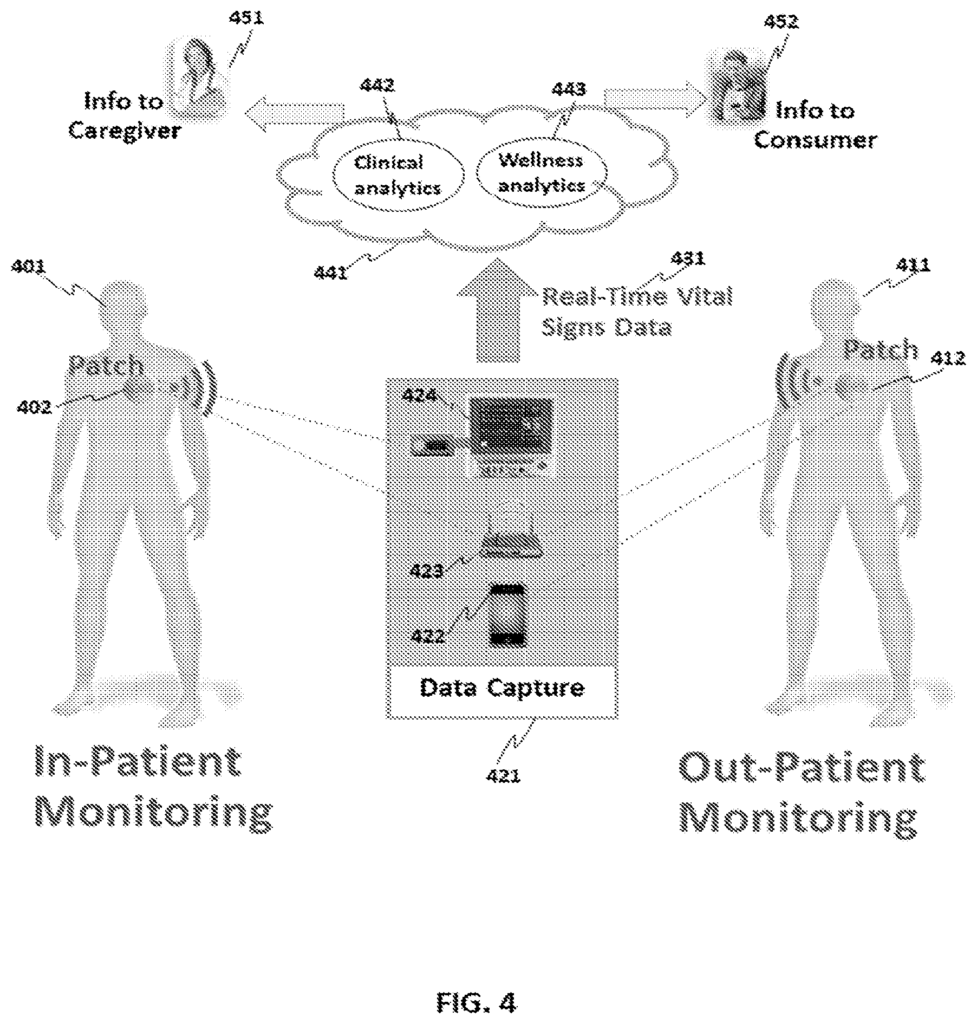
Click here to view the patent on Google Patents.
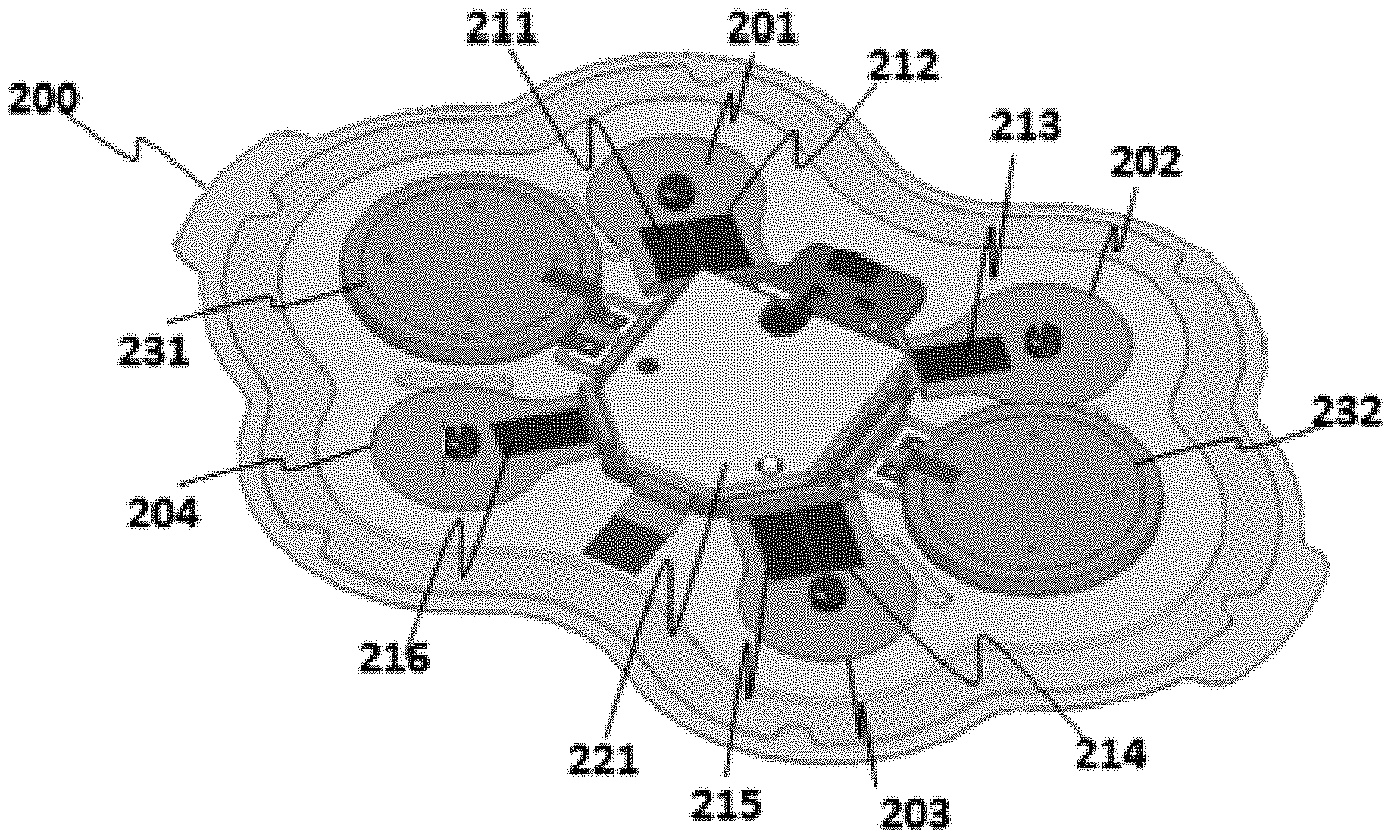
Leave a Reply